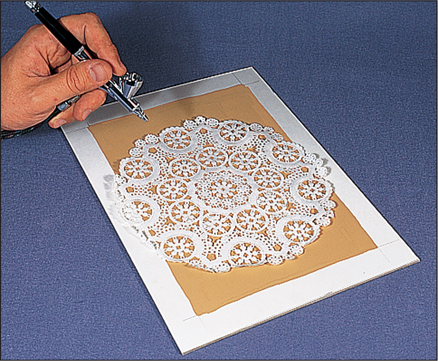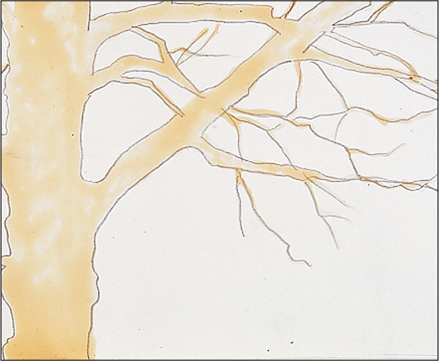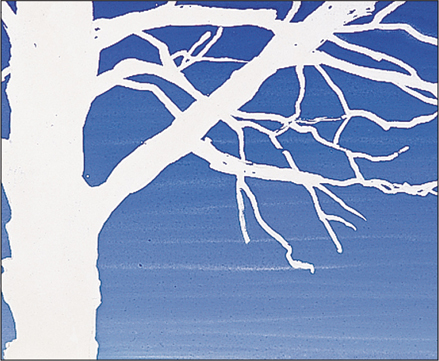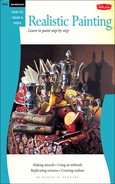STENCILING
There are two ways to paint with an airbrush—freehand or with stencils. Each method provides a different look. Freehand techniques are excellent for producing soft shadows, mellow gradations, and soft, fine lines. Stencils work well for items that have hard edges, straight lines, or areas where precision is required.

STENCIL FILM Stencils provide complete control of the spray; there is no guesswork with this technique. There are various types of stenciling material and different ways of using them. Here, a piece of frosted stencil film has been laid over a painting in progress, and the stencil is being cut out with a very sharp art knife. (For more information on making a stencil, see page 26.)


USING EVERYDAY OBJECTS Ordinary objects can also be used as stencils, such as a piece of lace or a cloth doily. First lay the object flat on the support. Spray directly down at the cloth. Wait for the paint to dry, and then lift the object off the support.


APPLYING MASKING FLUID Apply liquid masking fluid with a soaped brush. When the fluid is dry, you can paint over it. When the paint is dry, remove the masking fluid by rubbing it. Wherever the fluid was applied, the paper will be intact and untouched.


CREATING PATTERNS Use torn paper patterns to create unusual images. The farther away the paper is from the painting, the softer the pattern. The closer it is, the crisper the edges. Stencils can be made from tape, paper, cotton, or cardboard.
